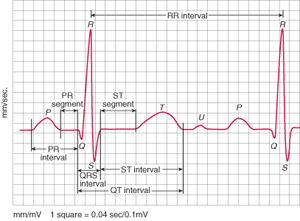Arrhythmia Identification Workshop

Brief Course Description
This 16 hour continuing education course is designed for healthcare providers having electro cardiographic monitoring responsibilities who desire to improve their level of arrhythmia identification skills. Participants will improve their knowledge base of cardiac anatomy, cardiac physiology, electro cardiographic monitoring principles, lead placement, and atrial and ventricular rhythm changes, including AV conduction disturbances.
This two day workshop will integrate lecture content with discussion and practice to guide the learner’s application of the content to their individual nursing roles.
Go To TopCourse Registration and Fees
PLEASE NOTE - COURSE REGISTRATION CLOSES 2 DAYS PRIOR TO THE START OF THE COURSE.
Click HERE to see a complete list of all of our upcoming courses, or click the link below to register for the upcoming Arrhythmia Identification Workshop.
Arrhythmia Identification Workshop |
Course Registration Fee: $150 |
Southern California Campus |
Arrhythmia Identification Detailed Course Description
This 16 hour continuing education course is designed for healthcare providers having electro cardiographic monitoring responsibilities who desire to improve their level of arrhythmia identification skills. Participants will improve their knowledge base of cardiac anatomy, cardiac physiology, electro cardiographic monitoring principles, lead placement, and atrial and ventricular rhythm changes, including AV conduction disturbances.
This two day workshop will integrate lecture content with discussion and practice to guide the learner’s application of the content to their individual nursing roles. Curriculum will be handed out the first day of class.
Course Objectives
At the end of the workshop, the learner will be able to:
- Identify the ECG components of the Cardiac Cycle
- Identify the three frontal plane bi-polar cardiac leads
- Measure and determine the standard electro cardiographic components of the ECG and compare normal vs. abnormal findings
- Calculate heart rate by three common methods
- Describe cardiac cellular physiology
- Describe atrial arrhythmia’s and discuss their mechanism of entry
- Identify ventricular arrhythmia’s and discuss their mechanism of entry
- Identify Atrio-Ventricular conduction alterations and describe the mechanism of conduction
- Describe the hemodynamic significance of the various cardiac dysrhythmias
Provider Information
Provider approved by the California Board of Registered Nursing, #CEP 12806; OCEMS California EMS CEU #30-0069.
Go To TopArrhythmia Identification Workshop Materials
Although a text is not required for this course, having an arrhythmia reference text available may be helpful. In preparation for the course, we suggest that you visit a couple of free EKG practice sites. We have some recommendations below.

